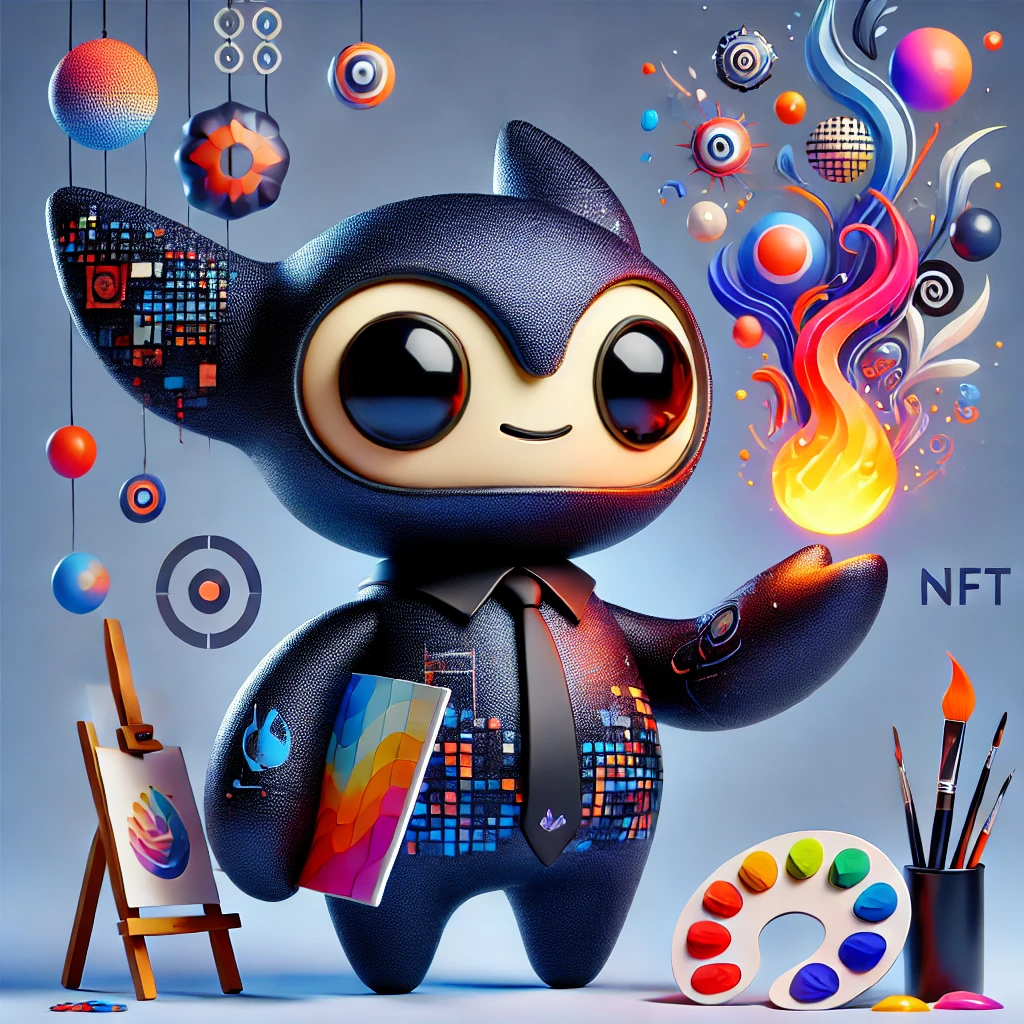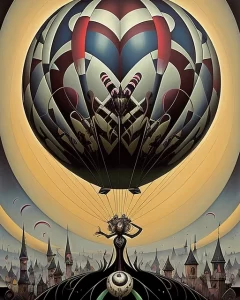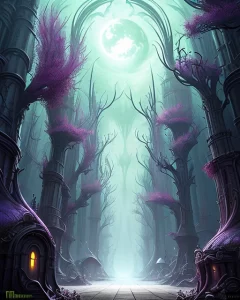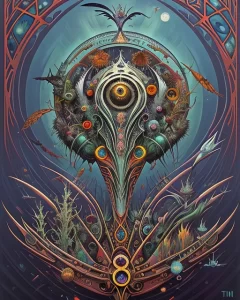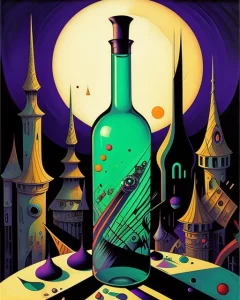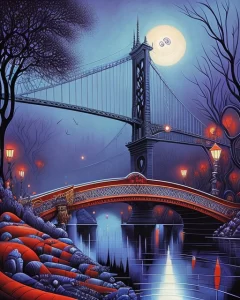The art world has always been a place of innovation, where boundaries are constantly pushed and redefined. In recent years, the advent of non-fungible tokens (NFTs) has ushered in a new era of artistic expression and ownership, transforming the way art is created, bought, sold, and experienced. These digital assets, representing unique, verifiable ownership of digital and physical items, have captured the imagination of artists, collectors, and investors alike, sparking a revolution in the art market.
The Rise of NFTs: A Digital Revolution in the Art World
NFTs first emerged as a significant force in the art world in 2021, fueled by the explosive growth of the cryptocurrency market and the increasing accessibility of blockchain technology. Artists quickly recognized the potential of NFTs to create new forms of artistic expression, circumvent traditional gatekeepers, and directly connect with their audiences. The ability to tokenize digital art, such as images, videos, and music, provided artists with a new avenue to monetize their work, bypassing the challenges associated with traditional art marketplaces.
The rise of NFTs also brought about a shift in the concept of art ownership. Traditional art ownership is typically characterized by physical possession of an artwork; however, NFTs redefine ownership through digital provenance. When an artist mints an NFT, they create a unique digital certificate of authenticity, stored on a decentralized ledger, proving their ownership and authenticity. This digital record ensures that every transaction and transfer of ownership is documented permanently, eliminating concerns about forgery and unauthorized duplication.
The Advantages of NFTs for Artists and Collectors
NFTs offer a range of advantages for both artists and collectors, transforming the art market into a more accessible, transparent, and engaging landscape. For artists, NFTs provide a powerful platform to connect directly with their audiences, bypass traditional galleries and intermediaries, and retain full control over the distribution and sale of their work. The ability to create and sell their digital artwork on NFT marketplaces eliminates the need for physical galleries, allowing artists to reach a global audience and earn a larger share of the profits.
From the collectors’ perspective, NFTs offer a unique opportunity to acquire and trade art in a more secure and transparent manner. The immutability of blockchain technology ensures the authenticity and provenance of NFT assets, eliminating concerns over counterfeit art. The ownership and trading history of an NFT are permanently recorded on the blockchain, providing collectors with a clear and comprehensive record of their investment.
The Impact of NFTs on the Art Market
The impact of NFTs on the art market is undeniable. They have democratized art collecting by making it more accessible to a wider audience, lowering the barrier to entry for both artists and buyers. With the ability to purchase fractionalized ownership of NFTs, previously unattainable artwork is now within reach for a broader range of collectors. This newfound accessibility has fueled a surge in interest and investment, attracting new audiences to the art world.
Furthermore, the emergence of NFTs has expanded the definition of art, embracing diverse formats and artistic styles previously excluded from traditional art marketplaces. Digital art, including generative art, virtual reality experiences, and interactive installations, finds a thriving home within the NFT ecosystem, prompting a new wave of innovation and creativity in the art world.
The Challenges and Criticisms of NFTs
Despite the undeniable impact and potential of NFTs, it is important to acknowledge the challenges and criticisms surrounding this emerging technology. One significant concern is the environmental impact associated with the energy-intensive proof-of-work consensus mechanism used by some blockchains. However, ongoing research and development are leading to the adoption of more sustainable and energy-efficient solutions, such as proof-of-stake consensus mechanisms, which are more environmentally friendly.
Another concern relates to the volatility and speculative nature of the NFT market. The value of NFTs can fluctuate significantly, making them susceptible to market bubbles and crashes. This volatility can deter some artists and collectors, creating an unstable and unpredictable environment for the art market.
Additionally, the rise of fraudulent NFTs and scams has raised concerns about security and authenticity within the NFT ecosystem. While blockchain technology provides a high level of security and immutability, it is essential to exercise caution and verify the legitimacy of NFTs before making purchases. The lack of regulatory oversight in the NFT market also presents challenges in addressing issues related to copyright infringement, ownership disputes, and fraudulent activities.
The Future of NFTs in the Art World
Despite the challenges, the future of NFTs in the art world appears promising. As the technology continues to evolve and mature, we can expect to see further advancements in security, accessibility, and sustainability. The development of innovative platforms and tools will enhance the user experience and facilitate greater integration with other industries. Furthermore, the emergence of interoperable NFT standards will enable seamless transactions across different blockchains, fostering greater connectivity within the NFT ecosystem.
NFTs have the potential to transform the art market in profound ways, empowering artists, enhancing accessibility for collectors, and fostering a more vibrant and inclusive artistic landscape. However, it is crucial to address the challenges and criticisms surrounding this emerging technology, ensuring its sustainable growth and adoption.
Table of Contents:
A Glimpse into the Diverse Landscape of NFT Art
Beyond Digital Images: Exploring the Expanding Definition of NFT Art
The allure of NFTs extends far beyond static digital images, embracing a diverse array of creative expressions that redefine the boundaries of traditional art forms. From interactive experiences and generative art to virtual worlds and physical installations, NFTs are pushing the limits of artistic exploration and pushing the boundaries of imagination.
Interactive Art Experiences: Blending Technology and Participation
Interactive NFT art blurs the lines between viewer and participant, inviting audiences to actively engage with the artwork and influence its evolution. These experiences often incorporate elements of game mechanics, augmented reality, or artificial intelligence, creating dynamic and immersive environments where viewers become integral parts of the art itself.
For instance, artists are creating interactive art installations where users can modify aspects of the artwork through physical interaction or by using digital tools. This collaborative approach allows artists to foster a sense of ownership and connection with their audience, creating a unique and fluid artistic experience.
Generative Art: Algorithms and Creativity
Generative art, leveraging algorithms and computer code, produces unique and constantly evolving artworks, challenging the traditional notions of artistic creation. Artists program algorithms that define the parameters and constraints of the artwork, allowing chance and randomness to influence the final outcome. The unpredictable nature of generative art creates an element of surprise and discovery, constantly revealing novel and unexpected forms.
The use of AI algorithms in generative art has further expanded the possibilities of artistic exploration, enabling artists to create complex and intricate artworks that would be impossible to achieve through traditional methods. By leveraging the power of AI, artists can explore new artistic frontiers, generating dynamic and unpredictable, often incredibly complex, pieces of art.
Virtual Worlds and Metaverse Art: Immersive Experiences
The metaverse, a collective virtual world where users can interact with each other and digital environments, has become a fertile ground for NFT art. Artists are creating virtual objects, experiences, and virtual real estate within these immersive spaces, allowing collectors to own and display their NFT art in a unique and engaging way. These virtual worlds offer a new level of interactivity and immersion, creating a truly immersive and engaging experience for art enthusiasts.
Bridging the Digital and Physical: NFTs and Physical Artwork
NFTs are also transforming the way physical artwork is created, exhibited, and collected. Artists can use NFTs to authenticate and track the provenance of their physical pieces, preventing counterfeiting and ensuring the legitimacy of their work. In cases where physical artwork is created alongside an NFT, the NFT serves as a key that unlocks access to exclusive content, special experiences, or ownership benefits for the holder.
This integration of physical and digital art forms a new paradigm in the art world, blurring the lines between the real and the virtual. It allows artists to explore new artistic avenues, offer collectors unique benefits, and create a sense of connection and exclusivity.
The Future of NFTs in the Art Market: Unlocking New Possibilities
The Next Chapter: Decentralized Arts Platforms and Web3 Communities
The future of NFTs in the art world is intertwined with the development of decentralized arts platforms and Web3 communities. These platforms aim to create a more equitable and transparent art market, empowering artists to control their work and connect directly with their audiences. Decentralized platforms, built on blockchain technology, eliminate intermediaries and provide artists with complete control over their artistic creations, revenue streams, and distribution.
Building Stronger Communities: NFTs as a Catalyst for Collaboration
NFTs are also playing a crucial role in fostering strong communities around art. Artists can leverage NFTs to create membership-based communities, providing exclusive benefits and access to their work. This collaborative environment allows artists to engage directly with their supporters, fostering a sense of shared ownership and contributing to a stronger connection between creators and their audiences.
A New Era of Art Ownership: Democratized Access and Fractionalization
NFTs are paving the way for a new era of art ownership, making art more accessible to a wider audience. Through fractionalized ownership, collectors can invest in a small portion of an NFT, making high-value artworks accessible to those with limited financial resources. This approach democratizes art collecting, allowing more individuals to participate in the art market and build their own collections.
Embracing Sustainability: Ethical and Environmental Considerations
As the NFT ecosystem continues to grow, ethical and environmental concerns remain paramount. The shift toward more sustainable blockchain technologies, such as proof-of-stake, is crucial to reducing the environmental impact of NFTs. Moreover, the development of responsible and transparent art marketplaces is vital for ensuring the ethical and equitable use of NFTs within the art world.
The Role of NFTs in the Metaverse: A New Frontier for Art
The metaverse, with its immersive experiences and virtual environments, offers a vast canvas for NFT art. Artists can create interactive installations, virtual galleries, and unique experiences that blur the boundaries between the real and the virtual. The potential for NFTs in the metaverse is boundless, opening up exciting new possibilities for artistic expression and engagement.
Conclusion: A Revolution in the Making
NFTs have transformed the art world in profound ways, ushering in a new era of ownership, accessibility, and creativity. From empowering artists to connect directly with their audiences to creating novel art forms and fostering decentralized communities, NFTs have challenged traditional art market structures and unlocked new possibilities for artistic expression.
While challenges and criticisms exist, including environmental concerns, market volatility, and the need for greater regulation, the potential of NFTs for the art world remains undeniable. As the technology continues to evolve, we can expect to witness even greater innovation, accessibility, and sustainability within the NFT ecosystem. The future of art is intertwined with the future of NFTs, and the potential for artistic transformation is vast and exciting.
Q&A: Understanding NFTs and Their Impact on Art
What are NFTs, and how do they work?
NFTs, or non-fungible tokens, are unique digital assets that represent ownership of a specific digital or physical item, such as a digital artwork, music file, or collectible. NFTs are created and traded on blockchain networks, which provide a secure and transparent record of ownership. Each NFT is unique, unlike traditional digital files that can be easily copied and duplicated.
What are the advantages of NFTs for artists?
NFTs offer artists several advantages, including:
- Direct connection with audiences:
- Greater control over their work:
- New revenue streams:
- Increased visibility and reach:
What are the advantages of NFTs for collectors?
NFTs offer collectors several advantages, including:
- Guaranteed authenticity and provenance:
- Secure and transparent ownership:
- Accessibility to a wider range of artists and artworks:
- Potential for investment and appreciation in value:
What are the challenges and criticisms of NFTs?
There are a number of challenges and criticisms surrounding NFTs, including:
- Environmental impact:
- Volatility and market bubbles:
- Fraud and scams:
- Lack of regulation:
What is the future of NFTs in the art world?
The future of NFTs in the art world appears bright. As the technology continues to evolve, we can expect to see greater adoption, innovation, and sustainability. The development of secure and user-friendly platforms, along with an increasing awareness of the environmental impact of NFTs, will be crucial for the continued growth and success of the NFT art market.
